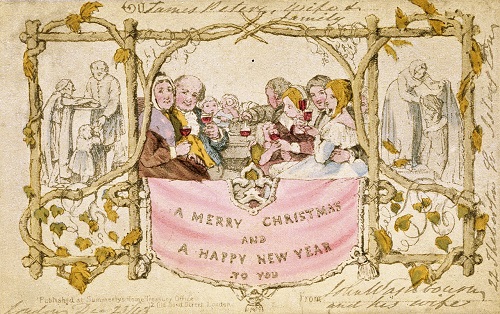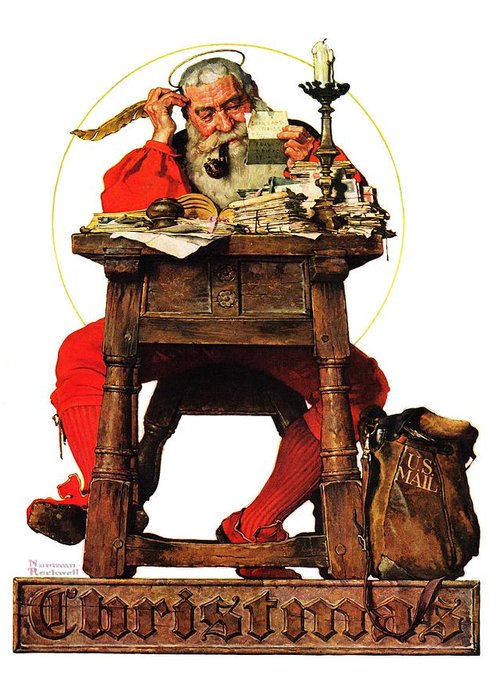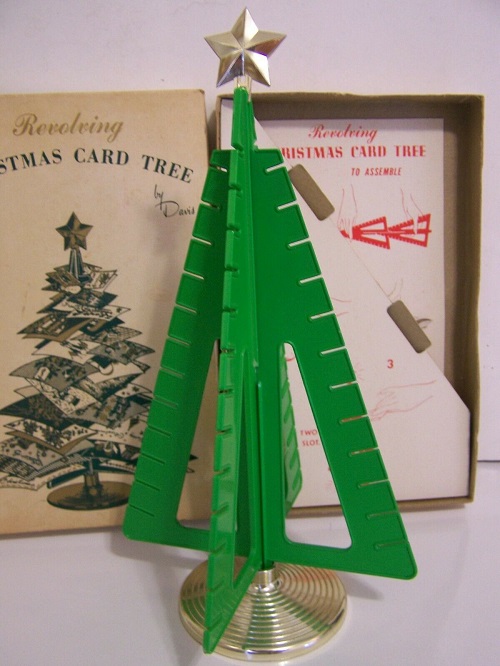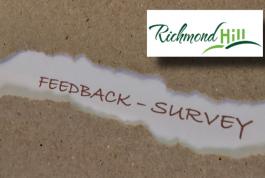The Father of the Christmas Card is regarded as Sir Henry Cole, of London, England. He was a very popular man and he needed a way to respond to all of his correspondence. He commissioned the first card by John Callcott Horsley, in 1843.
Here it is:

The image was criticized for promoting the "moral corruption" of children, with a child in the foreground drinking wine.
Queen Victoria was sending “Official” Christmas cards by the 1840s generally with a family portrait. By the 1880s sending Christmas cards was popular in England.
The first printer of U.S. Christmas cards was Louis Prang in 1875. He made really nice ones and was soon put out of business by cheaper imitations.
Hallmark Cards were established in 1913 by brothers Joyce and Rollie Hall. Their business really took off with WWI, and sending cards to those stationed overseas.
The design of Christmas cards gave some extra cash to some emerging artists, such as Normal Rockwell, Salvador Dali and Georgia O’Keefe.

(This Norman Rockwell card is available at www.fineartamerica.com)
Cards have also featured some of the world’s greatest art such as Botticelli. There have been some beautiful cards and have added to ones Christmas décor!
As far back as the 1900s charities have sold Christmas cards to raise funds for their causes.
Annie Oakley, the famous sharpshooter of Buffalo Bill’s Wild West show sent a 'personalized' Christmas Card, when in Scotland with her wearing a tartan at Christmas 1891. Now, personalized cards are very popular now with digital photography. It is easy and relatively inexpensive to design your own cards.
Handmade cards have always been in favour and maybe be a statement of commercialism or just a need to be creative.
Christmas cards are a reflection of the times both in the images and the production messages. If you want to learn more there is the book , The History of the Christmas Cards, by George Buday, published in 1954.
An additional chapter or two could be written for this history.
Research shows that the pre-baby boomer generation felt so strongly about sending Christmas cards during the holiday season that the average family sent around 300 cards. They were sent to everyone you knew. But no longer.
The increase in cost of mailing a card is significant. I have memories of a reduced cost for postage for mailing Christmas cards if they were not sealed??
Christmas cards are a target for environmentalists as a waste of paper, but advertising flyers certainly outweigh them.
E-cards can be regarded a nuisance, after the novelty of receiving your first few, often years ago.
There are so many venues for connecting and communicating that value of sending a card is lost.
There is no longer the need for most families for the Christmas card holder.

But receiving a Christmas card in the mail might come at just the right time, during a day when someone needed it the most.









